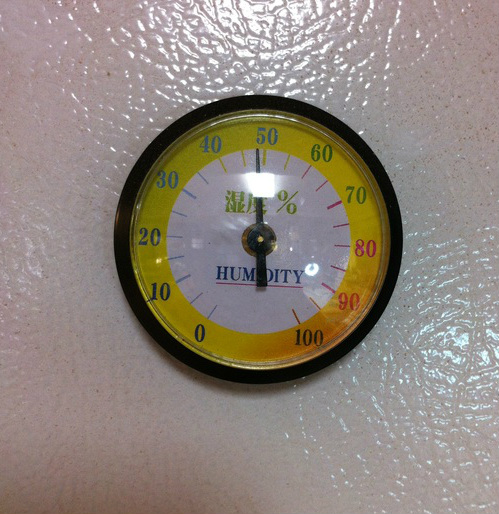THIS IS A CHEAP little gizmo and I don't know how accurate it is, but it does rocket up and down as the weather changes and I suspect it might be pretty reliable. It resides on a wall of my workshop. Last week in a stretch of dry cold weather it was at 33 % humidity. It is raining cats and dogs outside now, and has turned quite warm and look at the humidity now. the point of all this is that as humidity goes up and down, the wood in your ukulele absorbs the humidity and it too goes up and down in size. If the humidity change becomes extreme your ukulele may not be able to stand the strain and might crack.
I live in a damp -warm part of the world, and so i don't worry about humidity cracking very much, but those of you who are enduring this tough eastern winter might give some thought to humidity control.
I live in a damp -warm part of the world, and so i don't worry about humidity cracking very much, but those of you who are enduring this tough eastern winter might give some thought to humidity control.
At last it is time to string up the three tenors. I begin by glueing on the bridge. Here is the device I use to exactly set it at the right place. This piece of spruce is cut to the exact scale length for a tenor uke. I slip a temporary nut into the slot and then put the bridge with saddle up against it carefully marking the location with blue tape.
It won't be long now. When the glue has set up I will install the tuners. then I can stretch a string along the neck and determine where I must drill the hole for the string peg in the bridge. Then the pegs are fitted, the string notches filed and we will see what these ukes sound like, The end of a long road. Cross your fingers and stay tuned. We will be hearing a redwood top, a cedar top and a spruce top. It ought to be very interesting, and I hope pleasureful.






